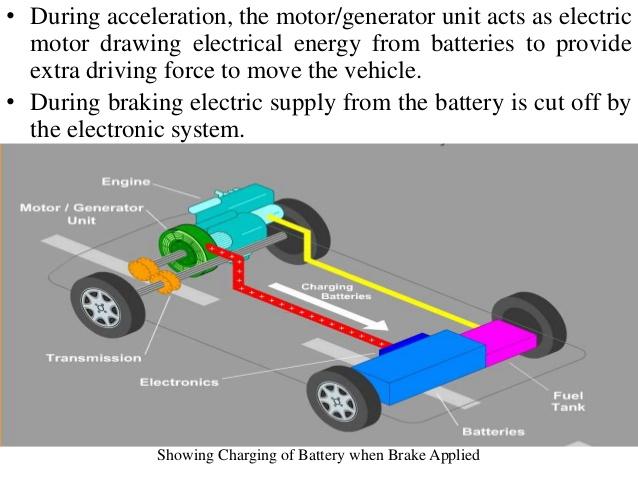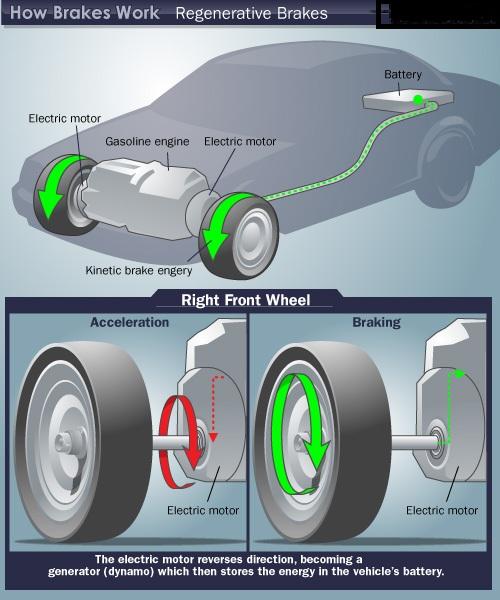Recently, hybrid owners and racing community are busy discussing how does regenerative braking work? The question is at the moment all over the internet. Basically, the system stores the energy that braking exhausts and keeps it for later use. The same goes for both F1 cars and Toyota Prius. So, let’s get to know more about how does regenerative braking work.
Conventional Braking
A conventional braking system simply converts your car’s kinetic energy into heat by friction. As you press the brake pedals, the brake calipers clamp the brake pads against rotor; the same happens to the wheel. This combines with the traction of tires, and the momentum becomes slow. As a result, the energy dissipates into the air, while the braking system cools down.
Regenerative Braking
Brake energy regeneration saves energy by preventing it from being wasted, like in regular braking systems. The traditional braking however complements the brake energy regeneration system in cars like Toyota Prius, as a precaution to ensure safety measures. In a Prius, the electric motors on wheel primarily deal with the most of braking duties. These motors effectively reverse the rotation direction and, as a direct result, the torque moves counter to the wheel’s motion and slows the car down. As the motors reverse direction, they, in a sense, become a generator. The additional amount of energy generated is saved in a battery. This allows hybrids like Prius to avoid charging through a direct plugging socket. This type of brake energy regeneration resembles a brake drum, and its location is behind the wheels. Luckily, the whole system doesn’t require any kind of extra servicing.
[efsbutton class=”btn” style=”” size=”” color_class=”” align=”left” type=”link” target=”false” title=”Join our FREE CAR GIVEAWAY Campaign here” link=”https://carfromjapan.com/campaign/car-from-japan-free-car-giveaway-2018″]
KERS Systems

Kinetic Energy Recovery System or KERS comes in both mechanical and electrical varieties. Electrical systems work similarly as it is in the Prius, storing the energy in battery. A mechanical system however stores the additional energy as a flywheel that has the capacity to spin up to 80,000 rpm. This flywheel is attached to the rear wheel to supply energy when required. An additional boost of 80hp passes through in a span of 6.67 seconds.
Whilst the use of regenerative braking systems is still at initial stage, the promise of its application both in racing and passenger car is high. Apart from additional weight, there is no apparent drawback of a regenerative braking system.
Moreover, the F1 KERS offers as much as 80hp increase; so in future you can see the system as a integral part of future street cars.
With F1 KERS systems offering as much as an 80hp increase on demand, it is not unlikely to expect to see these systems taking on a more performance-oriented role in future street cars.
How Does Brake Slave Cylinder Work?




beneficial info.